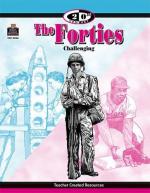|
This section contains 379 words (approx. 2 pages at 300 words per page) |

|
Wartime Changes.
World War II opened up many new possibilities for women. Expanded opportunities and better-paying jobs meant that they no longer would be forced into the stereotypical roles of teachers, secretaries, or housewives — while men were in the military, at least. War industry allowed them to be blue-collar workers, such as welders and taxi drivers, as well as business employees. Given the opportunity, women left education in droves. Colleges were quick to understand the implications of having more women on career tracks, and many developed curricula tailored for women.
Changing Curricula.
Before the war, women's colleges prepared their graduates for marriage and for home. Courses developed included child development, hygiene, home economics, and decorating. In 1924 Vassar College instituted a curriculum specially designed to educate women along the lines of what were supposed to be their chief interests and responsibilities: motherhood and the...
|
This section contains 379 words (approx. 2 pages at 300 words per page) |

|




